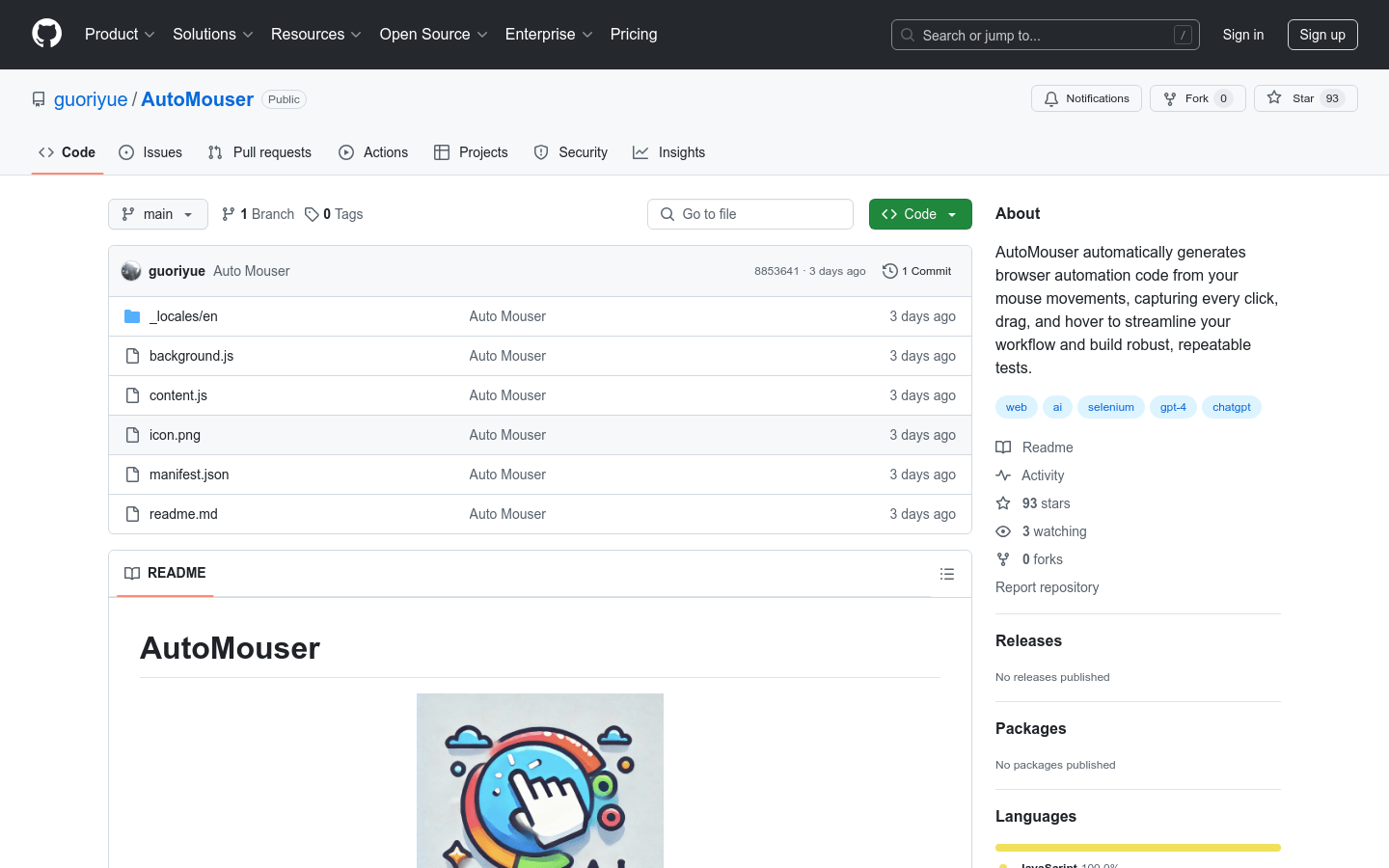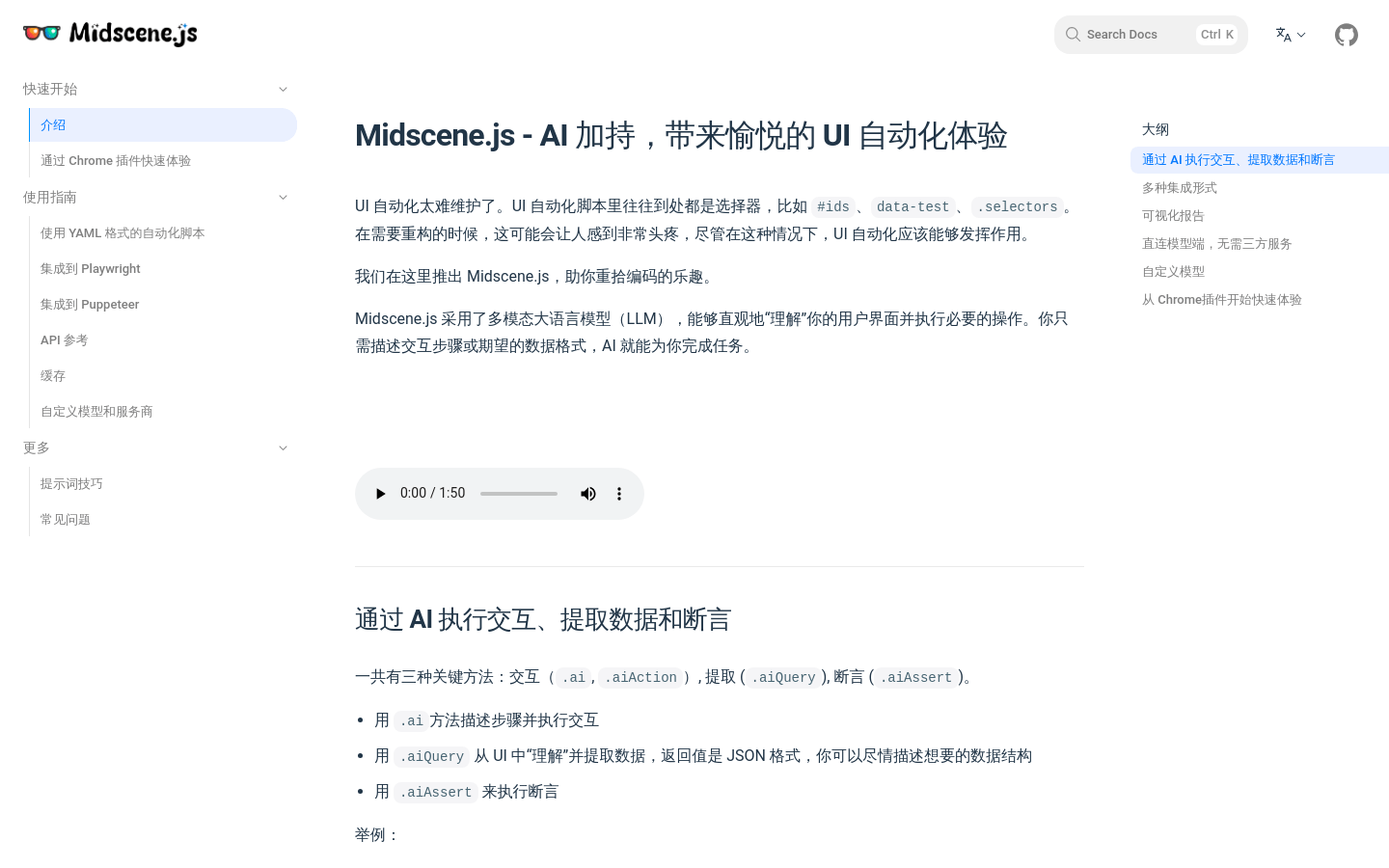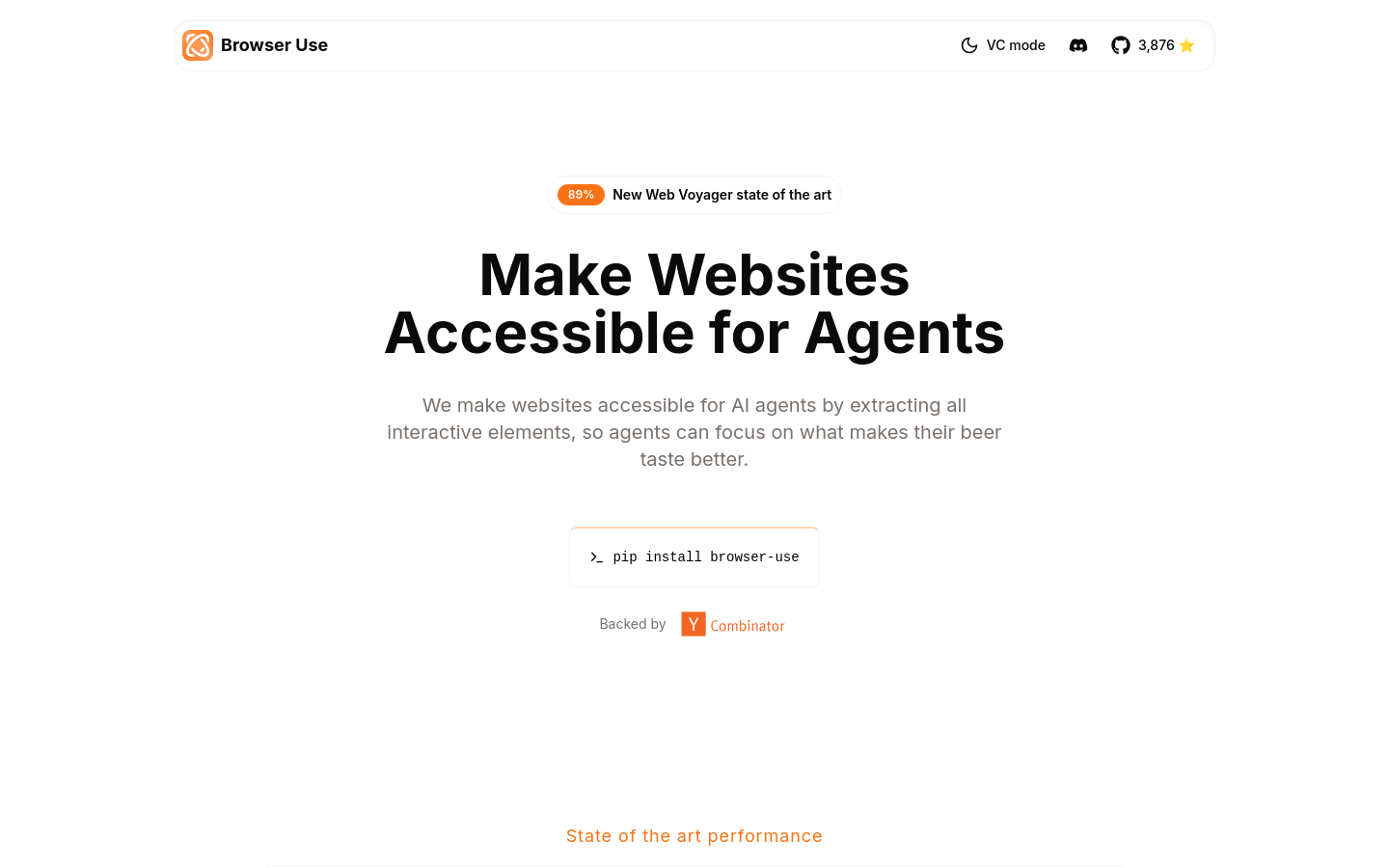OmniChain
Efficient self-updating vision workflow for large language models.

Product Details
OmniChain is an efficient self-updating visual workflow tool designed for large language models. It guides the AI language model through customized logical processes, significantly improving work efficiency. OmniChain uses chain memory capabilities to store and recall information and make decisions based on this information. It allows users to create processes that work like tireless robot employees 24/7, pausing operations only when the user decides to communicate with them. OmniChain can also guide smaller models through specific processes, improving efficiency and cost-effectiveness. Additionally, it is able to access the underlying operating system to read and write files and run commands, generate and run NodeJS code snippets or scripts, consume APIs, automate tasks, etc. OmniChain is private (self-hosted), fully open source, and available for commercial use through a non-restrictive MIT license.
Main Features
How to Use
Target Users
OmniChain is targeted at developers and enterprises who want to increase productivity and automate complex tasks. It is particularly suitable for users who need to leverage large language models for data processing, automate tasks, and create intelligent agents. Since OmniChain does not require coding skills, it is also suitable for users who want to quickly implement automated solutions but lack a programming background.
Examples
Automate social media management, publish content regularly and respond to user comments.
Create intelligent customer service agents to provide customer support 24/7.
Develop data analysis processes to automatically collect and analyze business data and generate reports.
Quick Access
Visit Website →Categories
Related Recommendations
Discover more similar quality AI tools

Compozy
Compozy is an enterprise-grade platform that uses declarative YAML to provide scalable, reliable and cost-effective distributed workflows, simplifying complex fan-out, debugging and monitoring for production-ready automation.

openai-agents-python
OpenAI Agents SDK is a framework for building multi-agent workflows. It allows developers to create complex automated processes by configuring instructions, tools, security mechanisms, and handoffs between agents. The framework supports integration with any model that conforms to the OpenAI Chat Completions API format and is highly flexible and scalable. It is mainly used in programming scenarios to help developers quickly build and optimize agent-driven applications.

OmniParser V2
OmniParser V2 is an advanced artificial intelligence model developed by Microsoft's research team, designed to transform large language models (LLM) into intelligent agents capable of understanding and operating graphical user interfaces (GUIs). This technology enables LLM to more accurately identify interactable icons and perform predetermined actions on the screen by converting interface screenshots from pixel space into interpretable structural elements. OmniParser V2 has made significant improvements in detecting small icons and fast inference, achieving an average accuracy of 39.6% on the ScreenSpot Pro benchmark when combined with GPT-4o, far exceeding the original model's 0.8%. In addition, OmniParser V2 also provides the OmniTool tool, which supports use with a variety of LLMs, further promoting the development of GUI automation.

Movestax
Movestax is a cloud platform for modern developers designed to simplify development and deployment through integrated solutions. It supports rapid deployment of front-end and back-end applications, and provides serverless databases, automated workflows and other functions. The platform uses zero-configuration deployment and supports a variety of mainstream frameworks and languages to help developers quickly build, expand and manage applications. Its main advantages include efficiency, ease of use and cost-effectiveness. Movestax is suitable for developers, start-ups and SMEs who need rapid development and deployment. The price structure is transparent and provides local currency pricing to reduce cost uncertainty caused by exchange rate fluctuations.

Stagehand.dev
Stagehand is an innovative AI-driven web automation framework that extends the capabilities of Playwright through natural language processing technology, allowing developers to automate browser operations in a more intuitive way. The importance of this technology is that it lowers the threshold for automated scripting, allowing non-technical users to easily implement complex web page interaction tasks. Stagehand's main advantage is its powerful natural language understanding capabilities, which translate simple instructions into precise browser actions. It was developed by the Browserbase team with the goal of providing developers with more efficient and smarter automation tools. Currently, Stagehand is free to use and is primarily intended for developers and automated testers.

AutoMouser
AutoMouser is a Chrome extension that uses OpenAI's GPT model to intelligently track user interactions and automatically generate Selenium test code. This simplifies the process of creating automated tests by recording browser actions and converting them into robust, maintainable Python Selenium scripts. Product background information shows that AutoMouser automates browser testing by capturing mouse movements, clicks, drags, and hovers, thereby improving work efficiency and building repeatable tests.

GraphAgent
GraphAgent is an automated agent pipeline designed to handle explicit graph dependencies and implicit graph-enhanced semantic interdependencies to accommodate prediction tasks (e.g. node classification) and generation tasks (e.g. text generation) in real-world data scenarios. It consists of three key components: a graph generation agent that builds knowledge graphs to reflect complex semantic dependencies; a planning agent that interprets different user queries and formulates corresponding tasks; and an execution agent that efficiently executes planned tasks and automates tool matching and invocation. GraphAgent reveals complex relational information and data semantic dependencies by integrating language models and graph language models.

Midscene.js
Midscene.js is a tool that uses AI technology to simplify UI automation. It intuitively understands the user interface and performs necessary operations through a multimodal large language model (LLM). Users only need to describe the interaction steps or desired data format, and AI can complete the task. The importance of this technology is that it greatly reduces the difficulty of UI automation maintenance, reduces the workload of script modifications caused by interface reconstruction, and at the same time improves the efficiency and accuracy of automated testing. Midscene.js supports a variety of integration methods, such as browser plug-ins, Puppeteer and Playwright, and provides visual reporting and debugging tools. As an open source project, Midscene.js adopts the MIT license to ensure data security and privacy.

Browser Use.com
Browser Use is a platform dedicated to making websites accessible to AI agents, by extracting all interactive elements so that AI agents can focus on their core tasks. The product combines advanced AI capabilities and powerful browser automation technology, supports multi-tab management, element tracking, custom actions, etc., and is compatible with all LangChain LLMs, including GPT-4, Claude 3 and Llama 2. Browser Use has become a leader in the field of AI network automation with its high-precision web proxy performance and ease of use.

Flow by Laminar
A lightweight task engine built on principles such as parallel execution. Suitable for developers and AI engineers building complex workflows and AI agents. free.

Trigger.dev
Trigger.dev is an open source background working platform that allows developers to write regular asynchronous code, while the platform is responsible for all work from deployment to elastic expansion. It supports no timeouts, real-time monitoring and zero infrastructure management. Ideal for developers who need to handle long-running tasks, the platform provides a solution that requires no servers to manage and can automatically scale as needed.

Steel
Steel is an open source headless browser API that allows users to control browser fleets in the cloud. It allows developers to use simple API calls to create instant browser sessions, with features such as automatic CAPTCHA resolution, proxy and browser fingerprinting to avoid being labeled as a robot. Steel is suitable for large-scale web scraping tasks and fully automated web proxies, making it simple to run browser automation tasks in the cloud. Product background information shows that Steel has provided more than 8 billion token crawls and more than 200,000 hours of browser service, with an average session startup time of less than 1 second. In terms of price, Steel offers free packages and a variety of paid packages to meet the needs of users of different sizes.

Nfig
Nfig is an API designed for AI agents, allowing them to browse, click and perform tasks on the web using natural language instructions. It enhances AI workflows and unleashes powerful agent capabilities by providing easy-to-integrate APIs. Nfig supports complex operations such as automated login and virtualized DOM, allowing AI agents to perform tasks that were previously out of reach. The product background highlights its developer-friendly design, security and self-healing capabilities, and commitment to data privacy. Nfig's pricing strategy is pay-per-use, with no monthly commitment and users only pay for the services they actually use.

browser-use
browser-use is an open source web page automation library that allows large language models (LLM) to interact with websites and implement complex web page operations through a simple interface. The main advantages of this technology include universal support for multiple language models, automatic detection of interactive elements, multi-tab management, XPath extraction, visual model support, etc. It solves some pain points in traditional web page automation, such as dynamic content processing, long task solving, etc. With its flexibility and ease of use, browser-use provides developers with a powerful tool to build more intelligent and automated web interaction experiences.

AFlow
AFlow is a framework for automatically generating and optimizing agent workflows. It uses Monte Carlo tree search to find effective workflows in the workflow space represented by code, replacing manual development and showing the potential to surpass manual workflows on a variety of tasks. The main advantages of AFlow include improving development efficiency, reducing labor costs, and being able to adapt to different task requirements.

Cerebellum
Cerebellum is a lightweight browser agent that achieves user-defined goals on web pages through keyboard and mouse actions. It simplifies web browsing into a navigation directed graph and uses a large language model (LLM) to analyze page content and interactive elements to determine the next step. Cerebellum improves the efficiency and accuracy of web automation tasks with its innovative AI-driven automation technology. Currently, Cerebellum supports compatibility with any Selenium-powered browser and the ability to populate forms with user-supplied JSON data. The product is currently in the Beta stage and is free for developers and researchers to use.